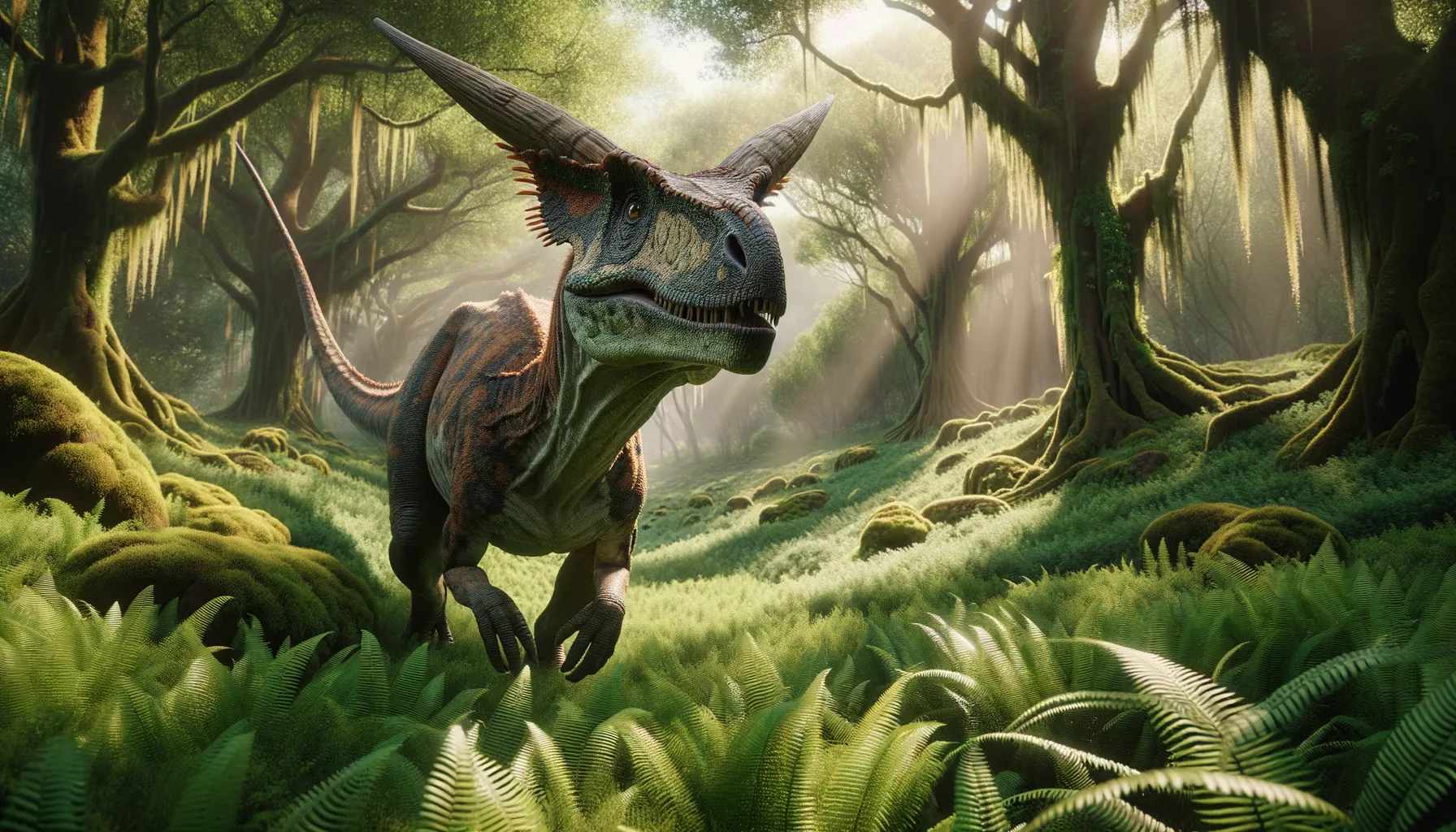
Xuanhuaceratops
A small ceratopsian with a big head.
Period
Jurassic
Length
About 3 meters from head to tail.
Height
Approximately 1 meter at the shoulder.
Weight
Around 100-150 kilograms.
Xuanhuaceratops was a small member of the ceratopsian family that roamed Asia during the Late Jurassic period. Known for its unique frilled skull, it was a herbivorous dinosaur that likely lived in herds. Fossil evidence suggests it had a moderate build, suitable for a relatively sedentary lifestyle in a forested environment. Xuanhuaceratops has provided paleontologists with insights into the early evolution of horned dinosaurs.
Diet
Xuanhuaceratops primarily fed on low-lying plants and vegetation, using its beak to clip foliage. Its diet would have included ferns, cycads, and possibly the earliest flowering plants.
Hunting
As a herbivore, Xuanhuaceratops did not engage in hunting. It foraged for food, likely relying on keen senses to locate suitable plant materials.
Environmental challenges
Xuanhuaceratops faced challenges such as fluctuating plant availability and competition for resources with other herbivores. It lived in a period characterized by a relatively warm climate and diverse ecosystems, requiring adaptation to varying environmental conditions. Predators posed a significant threat, necessitating group living for protection.
Speed
Moderate; not built for rapid movement.
Lifespan
Estimated around 15-20 years.
First discovery
Discovered in the early 2000s in Xinghuapo, China.
Fun Facts
- Xuanhuaceratops was a small dinosaur about as long as a modern bicycle.
- It lived during the Late Jurassic period, around 160 million years ago.
- Xuanhuaceratops is one of the earliest known members of the ceratopsian family, which includes the famous Triceratops.
- This dinosaur was discovered in the Hebei Province of China, giving it the name which means 'Xuanhua horned face.'
- Unlike its later relatives, Xuanhuaceratops had a bony frill on the back of its head but no large facial horns.
- It was likely a herbivore, using its beak-like mouth to munch on low-lying plants.
- Xuanhuaceratops provides important insights into the early evolution of horned dinosaurs.
Growth and Development
Xuanhuaceratops likely experienced a relatively fast growth phase during its early years. Juveniles would have been vulnerable to predation, so they may have grown rapidly to reach a safer size. As it matured, its distinctive skull frill developed, possibly serving for display or species recognition.
Habitat
Xuanhuaceratops inhabited forested areas in what is now northeastern China, an environment rich in plant life. The dense vegetation provided ample food and shelter from predators. The region supported a diverse range of dinosaur species, creating a complex ecosystem.
Interaction with other species
Xuanhuaceratops coexisted with various herbivorous and carnivorous dinosaurs. It likely formed herds for social structure and protection, communicating through visual displays and possibly vocalizations. Interaction with predators would have been cautious, relying on herd dynamics to deter attacks.
Natural lifespan
Xuanhuaceratops could live up to around 20 years in favorable conditions.
Reproduction
Xuanhuaceratops likely laid eggs, with nests possibly built in secluded, protected areas. After hatching, the young may have been cared for by adults until they could fend for themselves. This social behavior would have been advantageous for survival.
Social behaviour
Living in herds, Xuanhuaceratops exhibited social behaviors that facilitated group cohesion and protection against predators. Communication likely involved visual signals, such as head movements or gestures, enhanced by their unique frill structures.
Fossil locations
Fossils of Xuanhuaceratops were discovered in northeastern China, particularly in the region known as Xinghuapo. These finds have helped paleontologists understand the diversity and distribution of early ceratopsians in the Jurassic period. The well-preserved remains provided insights into its physical characteristics and evolutionary relationships.
